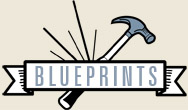Wall Street as Pompeii
A Museum Devoted to “Seminal Lunacy”
by NICK CALVERO, illustrations by JOHN LEE

No matter how many times we tell ourselves that history repeats itself, we always forget. The same speculators and complicated financial instruments that helped bring down the economy over the last year were around in the 1920s when Wall Street saw the Great Crash.
The turmoil in the stock markets and fear about the future among working people is all very vivid right now, but in a decade it will be a rapidly fading memory. Our children might even start getting creative and devise some new way of making money that conceals risk and sets us up for an even greater and more interconnected implosion.
Part of the reason for this fade is the fact that economics and finance are too abstract. It is difficult to figure out just what is a credit default swap today — by next week, my mind will have permanently evacuated itself of something so abstruse. To remember, we need a monument to what John Kenneth Galbraith called the “seminal lunacy” that seems to sweep over people every few generations.
In his study of the the 1929 crash, Galbraith wrote:
No one was responsible for the great Wall Street crash. No one engineered the speculation that preceded it. Both were the product of the free choice and decisions of thousands of individuals. The latter were not led to the slaughter. They were impelled to it by the seminal lunacy which has always seized people who are in turn seized with the notion that they can become very rich.

This Museum of the Seminal Lunacy could be rendered in the spirit of Pompeii. A thousand wax statues staring upwards at the tickers spelling out the abysmal news.
The expressions would have to adequately communicate the feeling that everything we thought was right wasn’t — that we had wondered into territory we never expected. It's a truly human museum — hopefully housed in the actual stock exchange, which isn’t really necessary anymore because of the efficiency of computers at executing trades.
A perfect accompaniment to the museum would be a set of perfectly preserved offices with the true stories of the men and women who worked in them — something like the Lower East Side Tenement Museum, which shows what it was like to live in the dirty, cramped days when immigrants packed by the dozen into small apartment buildings. The offices of the 21st century financial collapse would be exactly as they were: a wax figure staring out the window, gesturing wildly and speaking on a Bluetooth headset. For effect, a large cigar could be smoldering in an ash tray near the window (in clear defiance of a citywide indoor smoking ban). Part of a wall hanging might read: “Here was a man who was too smart for his own good. His efforts led to the financial ruin of hundreds of thousands. Yet the effects on his own life were minimal. He lives to this day in a palace in Scarsdale, N.Y.”

It would be a perfect day out with the family and likely the hang-out spot for the next generation of the overly ironic, but every business school graduating class, every first grade homeroom, and passersby should take a peek inside and think for a moment about the way people’s eyes glaze over when money is churned out before them.
ABOUT
BLUEPRINTS
A New York Moon “Blueprint” is essentially an idea encapsulated in a short amount of words or imagery.  It is something that could occur to as you ride the subway or right before you fall asleep. The Moon is interested in publishing re-imaginings of the city or world, and proposals that are as much thought experiments as possible creations. For example, if you think the intersection outside your house could be designed better or at least in a way more accomodating to human interaction, draw it and submit it, or photoshop it. On another plane, if you, in a fit of Fourierism, have a novel idea about to organize your building’s daily routine so as to inspire creativity and love, we are all ears and eyes. It is best, perhaps, to read a few blueprints to get a better understanding of how they work.
It is something that could occur to as you ride the subway or right before you fall asleep. The Moon is interested in publishing re-imaginings of the city or world, and proposals that are as much thought experiments as possible creations. For example, if you think the intersection outside your house could be designed better or at least in a way more accomodating to human interaction, draw it and submit it, or photoshop it. On another plane, if you, in a fit of Fourierism, have a novel idea about to organize your building’s daily routine so as to inspire creativity and love, we are all ears and eyes. It is best, perhaps, to read a few blueprints to get a better understanding of how they work.
Submit Blueprints to: blueprints@nymoon.com








